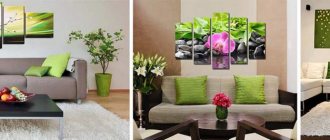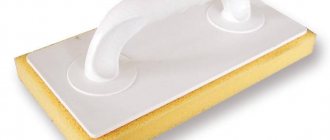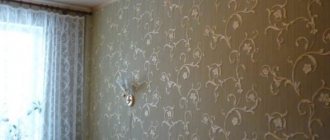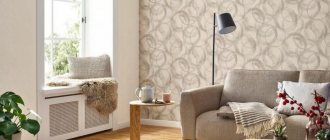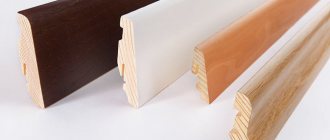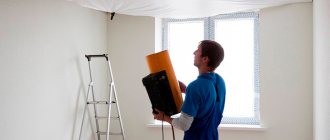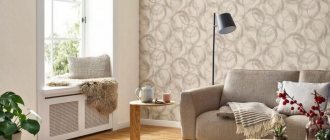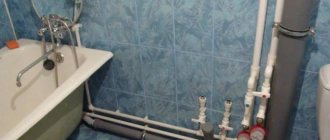If your room desperately lacks expressiveness, but you absolutely do not understand what detail in the interior can be used to enhance it, pay attention to paintings from several parts on the wall. There are now plenty of examples of photos using them on the Internet: after all, this is a very popular decor option today, fitting equally well into the format of both classical and typical modern style. However, how to choose exactly the painting that has the greatest chance of making friends with your interior? Deriving strict and win-win algorithms for a successful choice is the job of station fortune tellers, and we will try to reveal the whole variety of such pictures using the example of the most popular options. You will definitely find something for yourself!
- Features of modular paintings;
- Useful functions in the interior;
- Variety of images used;
- Some tips for successful placement;
- Even more photos in the interior;
- Conclusion.
Varieties
The images, divided into several fragments, are steeped in a long history dating back to the Middle Ages. For many centuries they decorated the walls of churches and noble houses. In modern interiors, such a design began to spread at the beginning of the 21st century, with the development of large-format printing.
A single image on a modular panel is assembled from several elements. To do this, the original drawing is divided into parts in a certain way. Thanks to such a constructive and artistic solution, an interesting spatial effect is obtained, making the image three-dimensional.
In landscape style Source pix-feed.com
The finished decor consists of square and/or rectangular fragments. It is classified according to the number of modules as follows:
- Diptych . A compact two-piece option, especially suitable for city apartments with small rooms. A diptych most often consists of elements of the same size and shape.
Diptych Source rehouz.info
- Triptych . It will have a proportional appearance in medium-sized interiors of 15-20 square meters. Unlike a diptych, the dimensions of the component parts may not be the same. Often the central part is made larger.
Triptych Source livemaster.ru
- Polyptych . For a canvas of four or more parts, you will need a large wall in a spacious room. Fragments may vary in size.
Four-part embankment Source static-ru.insales.ru
Felt applique
Felt is used in sewing, shoe making as an abrasive, and its cleaning is used in crafts. A flattened or three-dimensional felt product is made quite simply and turns out bright and original.
The material density is from 1.3 to 5.1 mm, ideal for cutting shapes with a distinct outline. It is used in different ways. Wool for large jewelry, wool mixture for small jewelry. Thin acrylic, viscose, polyester - for appliques.
In fabric stores you can often purchase complete sets of colored felt in packaging, including up to a dozen scraps of various colors and densities.
Module layout formats
The relative arrangement of individual modules is carried out in different formats. Paintings from several parts are mounted on the wall in the following ways:
- Vertical . A format in which modules are mounted one above the other while maintaining vertical symmetry. The technique is useful in that it allows you to visually raise the ceiling; the room will seem higher.
Vertical format Source twimg.com
- Horizontal . A classic way to help expand space. Decorative elements are located at the same height (in a line) while maintaining horizontal symmetry.
Horizontal format Source hostingkartinok.com
- Geometric . The modules are attached to form a geometric figure: a square or rectangle.
- Smoothed . The parts have different heights and are arranged so that their height decreases from the center to the two edges. In this case, the centers of the modules are aligned along a horizontal straight line.
With central symmetry Source steklo-rt.ru
- Stepped . The elements are arranged staggered, forming the characteristic shape of a staircase. The result looks good if the fragments have the same width. The height can be different, in this case the modules are aligned along the bottom edge.
Stepped arrangement Source dizainexpert.ru
- Diagonal . Alignment occurs along a diagonal line.
- Arbitrary . The parts are arranged in a different way from the above, without overall symmetry. The main thing here is to maintain harmony and unity of style.
Asymmetrical arrangement Source modulnye-kartiny-magazin.ru
See also: Catalog of companies that specialize in the reconstruction and rebuilding of houses
Kinusaiga
One of the hallmarks of Japanese culture is that almost every activity develops into high creativity. Nationally, it turned out that the raw material for the performance was a worn-out kimono, which they were ashamed to throw away.
The uniqueness of the amazing “patchwork without a needle” is that you don’t have to sew the parts together. Silk fabric for sewing Japanese robes is quite durable.
Progress:
- First, draw a diagram of the arrangement of elements.
- Transfer the sketch through a carbon copy onto the foam.
- Using the cutter, make cuts along the contour of the pattern with a depth of two to three mm.
- Cut the fabric into pieces of appropriate shape.
- Insert the scraps into the workpiece with a thin object. For example, with a cosmetic file.
- Trim off any excess and place it in a frame.
Size selection
The shape and proportions of a wall painting made from several parts do not have strict boundaries, but if the decor is intended to be placed in a medium-sized room, the following recommendations are followed:
- The shape of the modules is square or rectangular.
- The minimum side size of one module is always defined: 30 cm. Reducing this parameter is not recommended.
- The width of the composition is in the range of 1.2-1.7 m, height – 0.4-1.2 m.
Violation of canons Source squarespace-cdn.com
The choice of parameters for the entire composition is influenced by the area of the room. For a spacious room, you can order a large-scale canvas, but it will not fit into the living room of a Khrushchev-era apartment. Interior designers have developed simple rules that give hints on how to hang modular paintings correctly. To choose the optimal size, you need to know the following rules:
- In a classic design, the image should not occupy more than half the wall; for small rooms - no more than a third. Modern canons allow deviations from the rule.
- The top edge of the wall panel should not be higher than the door or window opening.
Deviation from the rule Source pinimg.com
- It is necessary to correlate the dimensions of the canvas and furniture. For example, if the picture will hang above the bed, its width should be at least half the width of the headboard. The width of the picture above the sofa should be at least a third of its length. Above the table (in the dining area) it would be correct to place it in the center.
- It is equally important to maintain enough free space between modules.
Non-standard layout Source best-wallpaper.net
Choosing a place for the canvas
In order for the image to fit well into the interior, you need to choose the right place for it. Large compositions will not look good in cramped rooms filled with furniture. For them you need to completely clear the wall.
Instagram marathon print
Vertically oriented canvases will visually elongate the surface, horizontal ones, on the contrary, will expand it. This must be taken into account if the dimensions of the room are far from ideal.
When choosing a location for the module, it is important to remember about proper lighting. It should be enough to make the colors sparkle. To do this, you may have to install a backlight. Natural light is not always beneficial for the canvas. Thus, oil paints quickly fade and deteriorate in direct sunlight.
The image is perceived well if located at the correct height. Usually this is 150-160 cm from the floor level. You can do it differently. At eye level, a mark is placed on the wall through which a horizontal line is drawn. It should divide the canvas in half. A work located at this level is perceived best.
It remains to determine at what distance from one another to fix the blocks. There is only one strict rule here: they must run parallel to each other. The slightest distortion is unacceptable. It is too noticeable and spoils the impression of the composition. “Spread” the fragments at different distances. This is individual and depends on several factors:
- block size;
- wall dimensions;
- presence of frame and its width.
A gap of 20-40 mm is considered optimal.
Instagram lite.picture
Typically, the larger the fragments, the further they are moved away from each other and vice versa. Small blocks that are significantly removed from one another look ugly. The integrity of the composition is lost.
Choice of colors
The first thing you need to do to choose the right color scheme for a divided painting is to determine the prevailing tone in the room. Then you need to select related (close) or contrasting colors for it. The following tips will help you make the right choice:
- If the interior is decorated in black and white or gray, then you don’t have to limit yourself in choosing the color scheme of the modular canvas.
- An interior in pastel colors will be complemented by a painting also made in muted shades.
Correspondence between the interior palette and the image Source yandex.net
- To make the interior harmonious, abandon multi-colored, motley images in favor of a picture with 3-4 primary colors.
- Bright, active colors are more appropriate in the living room than in the bedroom, where the atmosphere should be conducive to relaxation.
With red accent Source sense-life.com
Children's room
Children grow up, and their tastes change over time, and the “color” of the walls changes accordingly. At the initiative of parents, the frequency of updates ranges from 2 to 5, maybe 7 years. The younger generation may have their own opinions - usually less conservative than their parents.
It is known that in adolescence (11-16 years old) a teenager's tastes change quickly - so fashion posters will be updated several times a year. Therefore, the children's room should have an easily replaceable modular image design.
In general, the simplest scenes work best for a child's room. For example, for children under 12 years of age the images are suitable:
- Pets
- birds,
- trees,
- herbs
- flowers,
- trees
Animals or plants should be presented in different shades of the main color in the design of the children's room. In a children's room up to 3 years old, you can choose segments painted in different colors that harmoniously match the overall color.
For older children, collections that should be kept in the same style and executed on canvas or printed on paper or plastic sheet are suitable. It can be in large format:
- Personal Photos;
- portraits of favorite artists;
- portraits of athletes;
- sports photo.
Regarding technical features, it should be noted that the inhabitants of the children's room are very eccentric. They can:
- use school materials carelessly: pens, pencils, paints, markers;
- eat chocolate, cream and other products that pollute the interior;
- play with a ball;
- run and jump...
Many things can suggest an unbridled childhood fantasy. Obviously, bulky structures, fragile and non-combustible materials will be unsuitable.
Selecting a topic
A segmented picture is a good way to emphasize the individuality and tastes of the owners. Many companies engaged in the production of modular decor offer customers visualization based on photographs of the room and wall where they plan to hang the decor. This “trying on” will help you make the right decision. When inviting a painting, pay attention to the following considerations:
- The choice of theme is no less important than the choice of colors. When evaluating various options for modular paintings, they start with the plot. For the bedroom of an adult family member and a child, choose an age-appropriate theme. For some, a unicorn, and for others, Parisian streets with the Eiffel Tower in the background.
- The plot should correspond to the purpose of the room: a still life with apples is an idea more likely for the kitchen than for the living room.
In a bright bedroom Source design-homes.ru
- It is important that the lines dividing the image into modules do so harmoniously, without compromising the plot (only if this is not specifically intended). An unsuccessful, illogical dissection will spoil the most exciting curtain, and it will definitely not become a decoration.
- When choosing, take into account the style of the room. Abstraction is suitable for a modern interior, a reproduction of a painting is suitable for a classic interior, and a landscape would be appropriate for a rustic style.
In a cozy relaxation area Source design-homes.ru
The range of options is truly limitless. The companies have created albums of stories on various topics suitable for transferring to modules. You can order an individual painting based on your photograph or any image. Popular topics include the following:
- Nature. The top theme is flowers, but photos of animals (often pets) are also popular. Mountain, forest and sea landscapes, islands and sunsets are always in fashion.
- Abstractions, still lifes, images selected according to Feng Shui.
Holidays according to Feng Shui Source dizainexpert.ru
- Cities. City panoramas, cozy streets, famous places and attractions.
- People, faces, silhouettes.
- Subjects with ethnic overtones: Africa, Japan, India.
Abstract diptych Source wedo.vn
Christmas Saints
Cooking at home is becoming the main focus of home entertainment for most people. Here you can:
- unleash your culinary imagination;
- quench hunger and thirst;
- finally meet family members;
- watch TV (casually or intentionally);
- retire
According to the plot, the kitchen is a good still life, which depicts food products such as linens with fruits and / or vegetables, drinks (coffee, cocoa, juice, tea), venison, flowers, table vegetables. Here, the best wild animals or pastoral scenes will also suit the landscapes.
In the interior of different rooms
Separate paintings on the wall are universal interior decor. A correctly selected panel can easily change the space and become an accent of the interior. Paintings for different rooms are chosen following the following principles:
- Living room . You can choose any design, the main thing is to choose the right size and number of modules. The place is most often determined above the sofa or in that part of the room where attention should be focused. When choosing a theme, it is better to build on the interior style.
In the living room Source cloudinary.com
- Bedroom . The main criterion here is a calm, soothing palette, and the subject matter is not limited. The best place for a composite sheet is above the head of the bed.
Panorama of the city Source oz90.ru
materials
Today mass-produced modular images
are printed on various materials, and most often these are fabrics or non-woven fabrics and polymer films. In both cases, the printing technology ensures the highest color reproduction of photographic works or image reproduction. Segmented paintings, created to order or in small series, are today painted on canvas, usually with acrylic or oil paints.
The polyptych is placed on thick and printed posters with or without frames in ordinary rooms, under normal room conditions and humidity. Simply put, everything in the bedroom, living room and hallway down to the rice paper.
The kitchen and bathroom have the right polymer materials, particularly good old vinyl. Polypeptide polypeptides can be installed directly on the wall, as well as on a transparent or opaque base. Today this solution is very popular, creating a segmented image of a self-adhesive film installed on the inside of the glass. Pictures on glass effectively resist moisture and require minimal maintenance.
In addition to the bathroom and kitchen, particularly resistant materials and durable structures require open or semi-open spaces:
- terrace (veranda, rotunda),
- balcony,
- loggia.
In a word, materials for extreme conditions will be needed wherever they “walk”: wind, cold, sun, dry heat and humid fog. The same principle is followed when choosing a modular image of ship cabins.
How to hang
You can secure the canvas in several ways, with or without drilling. Owners thinking about how to hang pictures from several parts on the wall should consider the following introductory notes:
- Wall and finishing material.
- Weight of the canvas (each fragment). If you are planning a baguette, consider whether it will be plastic or wood.
- The place for the painting is chosen permanent or temporary.
In the dining area Source fantasticviewpoint.com
To secure the modular picture, use the following options:
- The simplest and most popular mounting method is a universal gear hanger. The bracket of the original shape is firmly attached to the stretcher on the back side of the picture. One nail is enough to secure it.
- If the painting takes up an unstable place, adhesive fasteners will come to the rescue. They can be used without the help of a drill or hammer drill. They can be easily removed in the future with minimal risk of damage to the wall finish.
In the loft interior Source shopify.com
Volume options
To make the image capacious, a number of techniques are used:
- filler: foam rubber, holofiber, various textile waste, cotton wool;
- crumpled sheets soaked in adhesive paste placed under the fabric;
- ribbons, textile balls, braid, flowers, made separately and attached to a single-color base;
- starched parts attached to stretched fabric;
- use of parts in the frame.
Briefly about the main thing
Modular paintings are an easy way to emphasize the style of the interior and create a stylish accent. They are surprisingly varied in appearance due to the variety in the number of modules and in the way they are positioned relative to the wall.
To decorate a room with suitable wall decor, you need to take into account the size of the room, choose the shape and color palette of the modular painting. For the interiors of different rooms, paintings with appropriate themes are selected; You may have to take into account the age of the occupant of the room, his preferences and tastes. Modular images are quite lightweight, and there are several ways to fix them, depending on the temporary or permanent nature of the placement.
Ratings 0
Technique, examples
Textile painting varies greatly in design and style. It can look like a mosaic painted on Chinese silk, a panel, a three-dimensional pattern. The technique of creating paintings originated in the Japanese Empire, and then in Great Britain and the United States and the Russian Federation.
All possible types of execution of smooth and convex reproductions from the manufactory:
- kinusaiga;
- osie;
- patchwork quilt;
- quilling;
- string art;
- from openwork weaving;
- from felt;
- damp cloth;
- from jeans;
- 3D version.
Always make a sketch on paper with a pencil, then select the type of execution that is especially interesting to you.
Modular complex - a decorative attribute with many practical properties
Segmental paintings, which are usually called modular, like conventional ones, are characterized by a wide scope of application. They can become a spectacular decoration not only for residential premises, but also for the interiors of restaurants, offices, public institutions and kindergartens. The original appearance of the modular complex will attract attention and will not leave cafe visitors or house guests indifferent. Even a person with special aesthetic tastes can easily select the appropriate option from the abundance of variations.
A purchased decorative attribute, consisting of separate modules and forming a single image, can be an excellent gift.
What else is used for fixation?
Hanging holders for paintings and photos are special slats made of metal, wood, plastic, fixed under the ceiling space. They have vertical bases where the frames are installed. On these rods, modules can be moved up or down without difficulty.
How to hang a 5-piece modular picture without nails in other ways? To do this, you can use thread guides with hooks at the ends. This system is more complex; it allows you to lower and raise the canvas to the desired distance.
A little history
Modular paintings entered modern life from altars and walls of religious buildings. In the ancient world they were a typical form of church decoration. This manifested itself among both northern and southern peoples. The ancient Celts, Byzantines, and Romans decorated their buildings.
Historians date the appearance of such images to the 9th century AD; the first officially confirmed modular painting is kept in the city of Gdansk, where the National Museum of Poland is located. It was created in 1470 and is called “The Last Judgment”.
Military history museums present all kinds of panoramas of events, each part of which can be considered as a separate work of art. In the modern world, there is a different interpretation of such images, far from military or religious views. Today it is a wonderful room decoration that brings comfort and unique design to the home.
